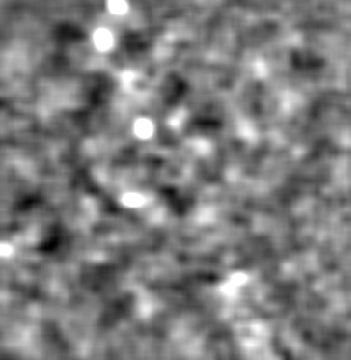Next: PHOT Interactive Analysis Up: ISO INFO No. 11 Previous: ISO Observations of comet
A Deep mid-IR Survey
Deep surveys of the universe have been providing us with very important information about formation and evolution of galaxies and active galactic nuclei. They have been conducted mostly at the optical and near infrared ranges accessible from ground-based telescopes. In particular, near-infrared deep surveys are able to trace the rest-frame optical light of high-redshift galaxies and are thus very useful in studying infant phase of the galaxies. However, the recent success in near-infrared deep surveys have urged us to perform deep surveys at mid-infrared. Such surveys will have a chance to find very high-redshift galaxies as well as unknown reddened populations in the universe.
Motivated by this, we have performed a very deep survey at 7 microns using ISOCAM - a 13.4 hour integration (target dedicated time) of a tiny sky area (3 x 3 arcmin) at the Lockman HI hole. This is the best area of sky for any deep survey program because the HI column density, due to HI gas in our Galaxy, is the least over the whole sky. Our deep survey has reached a 3 sigma detection limit of 10 > µJy per beam (6 x 6 arcsec), giving rise to the detection of more than 50 sources with near-infrared (2 micron) counterparts.

ISO's 7 micron image of the Lockman Hole. This and the 2 micron image can be seen in the science gallery at
http://www.iso.vilspa.esa.es/science/
Shown above is the 7 micron image (ISOCAM LW2 filter) of the Lockman HI hole. This was compared with the (1.6 - 2.1 micron ) image, obtained with the University of Hawaii 2.2 m telescope at Mauna Kea, Hawaii. It is found that more than two dozen of the near-infrared galaxies with brighter than K=19.5 mag are 7 micron emitters. The infrared radiation may be interpreted as either dust emission heated by a large number of massive stars made in a `starburst', a tremendous burst of star formation, or emission from red giant stars in the galaxies.
We consider that most of them may be star forming, massive galaxies at intermediate to high redshifts. Future follow-up spectroscopy will give exciting answers.
Next: PHOT Interactive Analysis Up: ISO INFO No. 11 Previous: ISO Observations of comet
Editor: K. Leech